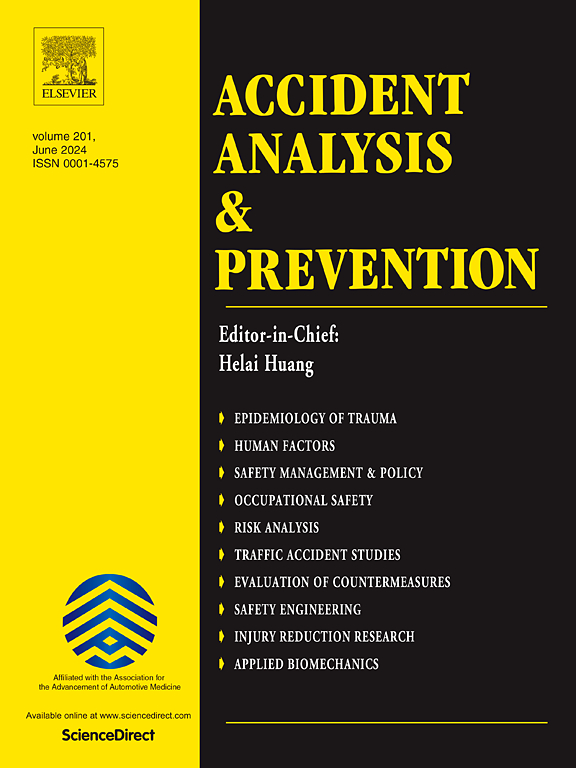Learning salient representation of crashes and near-crashes using supervised contrastive variational autoencoder
IF 6.2
1区 工程技术
Q1 ERGONOMICS
引用次数: 0
Abstract
Models capable of learning representations that are salient in safety–critical events (SCEs; including crashes and near-crashes) are crucial for road safety. This study proposes a novel deep learning model, the supervised contrastive variational autoencoder (scVAE), that incorporates supervised contrastive learning methods into the variational autoencoder (VAE) framework. By leveraging two distinct encoders, the scVAE encourages the salient latent variables to be discriminative, capturing the unique representations of SCEs while being regulated by the response variable to focus on the most relevant representations for accurate clustering. Through application on the Second Strategic Highway Research Program (SHRP 2) Naturalistic Driving Study kinematic datasets, we demonstrated the effectiveness of the scVAE in learning salient representations that enable improved clustering compared to alternative models. Quantitative analysis revealed clear clustering patterns in the learned salient representation space, facilitating downstream tasks such as generating samples, denoising, and prediction. The proposed approach of combining contrastive and supervised learning can be scaled to other model frameworks and data modalities, offering a promising direction for learning-enhanced representations that cater to tasks of interest. The study findings highlight the contributions of scVAE to traffic safety, offering enhanced capabilities for driving scenario generation and SCE detection.
使用监督对比变分自编码器学习碰撞和接近碰撞的显著表示
能够学习在安全关键事件(sce)中突出的表征的模型;包括碰撞和接近碰撞)对道路安全至关重要。本文提出了一种新的深度学习模型——监督对比变分自编码器(scVAE),该模型将监督对比学习方法融入到变分自编码器(VAE)框架中。通过利用两个不同的编码器,scVAE鼓励显著的潜在变量具有区别性,捕捉sce的独特表示,同时受响应变量的调节,专注于最相关的表示,以实现准确的聚类。通过在第二战略公路研究计划(SHRP 2)自然驾驶研究运动学数据集上的应用,我们证明了scVAE在学习显著表示方面的有效性,与其他模型相比,这些显著表示能够改进聚类。定量分析揭示了学习到的显著性表示空间中清晰的聚类模式,促进了下游任务,如生成样本、去噪和预测。所提出的结合对比和监督学习的方法可以扩展到其他模型框架和数据模式,为满足感兴趣的任务的学习增强表示提供了一个有希望的方向。研究结果强调了scVAE对交通安全的贡献,为驾驶场景生成和SCE检测提供了增强的能力。
本文章由计算机程序翻译,如有差异,请以英文原文为准。
求助全文
约1分钟内获得全文
求助全文
来源期刊

Accident; analysis and prevention
Multiple-
CiteScore
11.90
自引率
16.90%
发文量
264
审稿时长
48 days
期刊介绍:
Accident Analysis & Prevention provides wide coverage of the general areas relating to accidental injury and damage, including the pre-injury and immediate post-injury phases. Published papers deal with medical, legal, economic, educational, behavioral, theoretical or empirical aspects of transportation accidents, as well as with accidents at other sites. Selected topics within the scope of the Journal may include: studies of human, environmental and vehicular factors influencing the occurrence, type and severity of accidents and injury; the design, implementation and evaluation of countermeasures; biomechanics of impact and human tolerance limits to injury; modelling and statistical analysis of accident data; policy, planning and decision-making in safety.
 求助内容:
求助内容: 应助结果提醒方式:
应助结果提醒方式:


